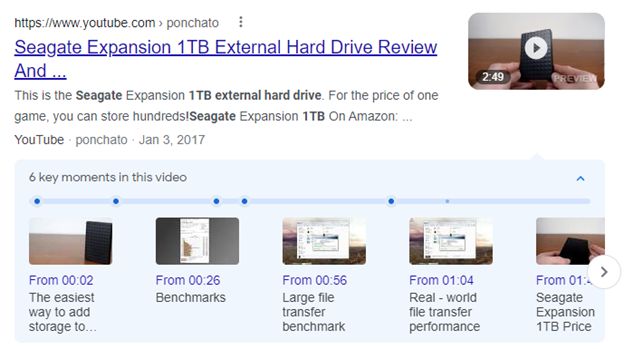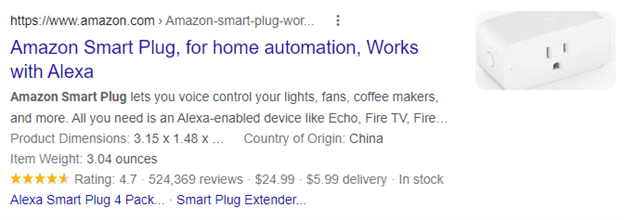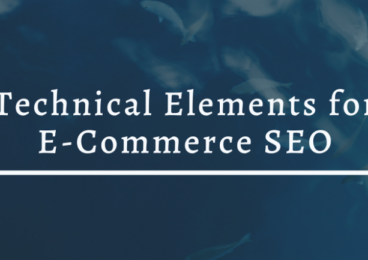
Table of Contents
Introduction
Although search engine optimization (SEO) has one of the best returns on investment (ROI) of any eCommerce marketing campaign, many web developers don’t consider the best SEO practices when setting up their websites. This is a lost opportunity because hundreds or thousands of pages from your eCommerce stores can be set up to compete for search engine results pages, but they won’t fare well right away if they weren’t siloed together or built with correct on-page practices.
eCommerce stores also tend to rely heavily on social media or paid advertisements, which can be excellent for businesses but frequently demand constant effort and ad spend money. Some companies spend millions of dollars on advertising each year, and this cost is only rising. A well-optimized site can help reduce advertising costs significantly if executed properly.
If you have a new eCommerce site, you need to invest in boosting your organic traffic in 2022 and beyond. This will set you up for success because SEO can give results that grow organically every year. But to succeed in the space among hundreds of competitors, you will need a solid SEO strategy to back you up—just tackling a few basic SEO items won’t cut it.
Mark Jackson, our president and CEO, had this to say about starting an eCommerce SEO program:
When we engage on a new SEO initiative, we involve ourselves in deep research to identify keywords, competitor activity, and technical issues to resolve. During this time, we will often come across quick-win items that we can engage in immediately while our concurrent research continues. Time is money, as we all realize, so getting some traction on items now is valuable and helps move the effort forward while we conduct the deeper research to more strategically address deficiencies and improve results.
In this blog post, we will discuss some of the first steps you need to tackle as part of an overarching eCommerce SEO strategy so that you can set it up for success—whether you do it yourself or hire an SEO agency to help you.
Get Your Site Verified in Google Search Console
This is Google’s tool for site owners and webmasters that allows Google to communicate with site owners. It also provides numerous reports and insights into how Google views your website and helps you troubleshoot issues. This is especially helpful for some of the later schema recommendations in this article, where small syntax issues can break the schema markup and prevent search result display enhancements from showing.
There are several methods you can use to verify your site:
- HTML file
- Meta tag
- Google Analytics
- Google Tag Manager
- DNS
We usually recommend DNS because there are no front-end dependencies, so one of the other verification methods are therefore less likely to be inadvertently removed with site updates.
We also recommend verifying the multiple versions of your site as well as the domain property. Below are the site variation examples:
- http://example.com
- http://www.exmaple.com
- https://example.com
- https://www.example.com
Even though you may not use any of these variations, getting them verified now will help you or your SEO agency troubleshoot any issues that arise.
Also be sure to verify any subdomains you also own such as the following:
- blog.example.com
- forums.example.com
- help.example.com
Identify Content to Support the Customer Journey
Providing relevant information to web searchers at different points in the marketing journey is where a brand’s content shines. In other words, it lets your company provide and generate content for customers at every stage of their digital journey as they become acquainted with your products and services.
You will need to create different types of content for different stages of the customer journey—but make sure to have some content for all stages. If the goal is to get someone to buy, then buying guides can be excellent supporting pages.
These pages offer additional handwritten content and therefore avoid syndicated product descriptions, so you can use them to show off your expertise and product knowledge.
Add FAQ Content
Customers tend to have multiple inquiries before they make a purchase, including those pertaining to the product’s price, warranty, and most notable features. A frequently asked questions (FAQ) page and FAQs on the product pages can save your customer service the time and hassle of answering repetitive inquiries each day.
Not to mention, an FAQ page is the perfect solution for readers’ shortening attention spans in a world where they have too many options. Most consumers will leave a website if they are unable to locate the information they require and look elsewhere. An FAQ page solves that problem as well.
Create Video Content
There are several reasons why video is so important to your eCommerce marketing strategy. Videos not only help educate the customer but can also provide additional search visibility. This is because Google continues to show more videos in search results and is now highlighting key moments, allowing users to skip right to the part of the video that interests them.

Online shoppers have less of an opportunity to examine a product in detail before making a purchase than those who shop at traditional stores. Videos can fill this void by demonstrating the product in action and providing additional information about the product’s look, feel, and function in normal use.
Videos can also be used effectively on many different pages of a website, not just product pages. For instance, you can answer questions using videos on category pages or create video guides on how to use your products correctly.
Usage of videos on pages also aids in conversions and the time a person spends on a particular page.
Uploading the video on YouTube or your own server works equally well. Make sure to name the videos correctly and monitor their visibility using Google’s new video indexing report.
Enable Product Reviews
Besides providing the convenience of shopping from home, online shopping also allows consumers to research the product quality in real time. Product reviews are how consumers decide if they can trust your brand or product enough to make a purchase among a sea of others who sell similar products.
Leverage reviews to show your customers’ endorsement of your product on your website and generate social proof of your product working as you say it does.
You can also use customer reviews as the basis for blog posts about the best products to buy or articles that compare products.

You don’t need as many reviews as this Amazon product to compete, but gaining even a few good reviews will go a long way, and those gold stars make your listing stand out in the search results.
A thorough testimonial-based guide would ideally talk about the product’s features, its cost, and the advantages it offers to the buyer, so make sure your blogs talk about these in detail. Use bullet points and bold text to draw the reader’s attention to the most important aspects of the product being reviewed.
Optimize Your Product Images
Product images are important to showcase your product to the customers. For the best user experience, be sure to use high-quality images. However, try to keep the image file size under 100 KB for quick loading times because many shoppers like to start researching products on their mobile phones.
Make sure the image filenames use words that describe the products instead of seemingly random characters and numbers, and include relevant copy in the image alt attributes. These, as well as the surrounding copy, help search engines better understand what the image represents and can help with visibility in image search results.
Use Schema Markup
Search engines use their standard procedure of crawling and indexing to analyze your eCommerce site’s content and determine its purpose. You can aid this comprehension with a machine-readable format, known as schema markup. Schema markup helps you communicate to search engines what the page is about versus leaving it entirely on them to figure out your content’s relevancy for a search term. Because relevancy is the basis for being found in search results, schema is a handy tool for SEOs. The following is a list of the initial schema you need to add:
- Company identity and contact information
- Product schema
- Product review schema
- FAQs
- Video
The increased visual appeal that schema markup can give your pages in the search results will help build trust for users, increase the click-through rate, and therefore increase traffic to your site.
When testing the syntax of your schema markup, we recommend using the Google Rich Results testing tool rather than the schema validator tool because Google’s is more closely aligned with how it understands and processes schema, and it highlights issues in the Google Search Console.
Generate XML Sitemaps
Given the programmatic way that eCommerce sites are built (using categories, subcategories, then paginated lists of products), many products will be difficult for search engines to discover the deeper they are in the site. However, product pages are your money pages, so you need to make sure search engines discover them and show them in the search results.
XML sitemaps help search engines discover all the pages on your site and are crucial to keep updated as the products are updated on your site. If your site has tens or hundreds of thousands of products, then consider splitting your XML sitemaps into logical groups by category or brand, for example.
For larger sites, we also advise having the system generate the XML sitemaps automatically on a set schedule to keep them updated. Try to avoid including URLs that redirect and return a 404 response. Search engines only want to see a list of pages that should be in the search results.
Search engine crawlers will periodically crawl your XML sitemaps (usually every few days) to check for changes. But if you’ve made a significant update to your site and are launching new products, then you can notify Google to recrawl the XML sitemaps by pinging them with the following URL format:
https://www.google.com/ping?sitemap=FULL_URL_OF_SITEMAP
Conclusion
Organic search can be a high-ROI marketing channel if executed correctly. By tailoring the content and website architecture according to best SEO practices, you can set wheels in motion for your website to start getting qualified organic traffic and reduce your reliance on paid media channels.
If you don’t have any SEO professionals on your team who can actively work on your website every month, it may be best to hire an eCommerce SEO agency and let them do what they do best so you can focus on running your business. That way, all parts of your eCommerce site are set up for scaling and you are not left wearing all the hats alone. Plus, you will be handing over your website to someone with a proven track record.
Check out the other blog posts in our ECommerce Series:
At Vizion Interactive, we have the expertise, experience, and enthusiasm to get results and keep clients happy! If you run an ecommerce site and are due for a redesign or have just launched a redesign, our SEO Audit Services identify problems with your site and lay out a plan of action. Then our experts will be right by your side with our ongoing ecommerce SEO Services to grow organic traffic and take your site to the next level. Get in touch with us to discuss more, we’re looking forward to hearing your story.




